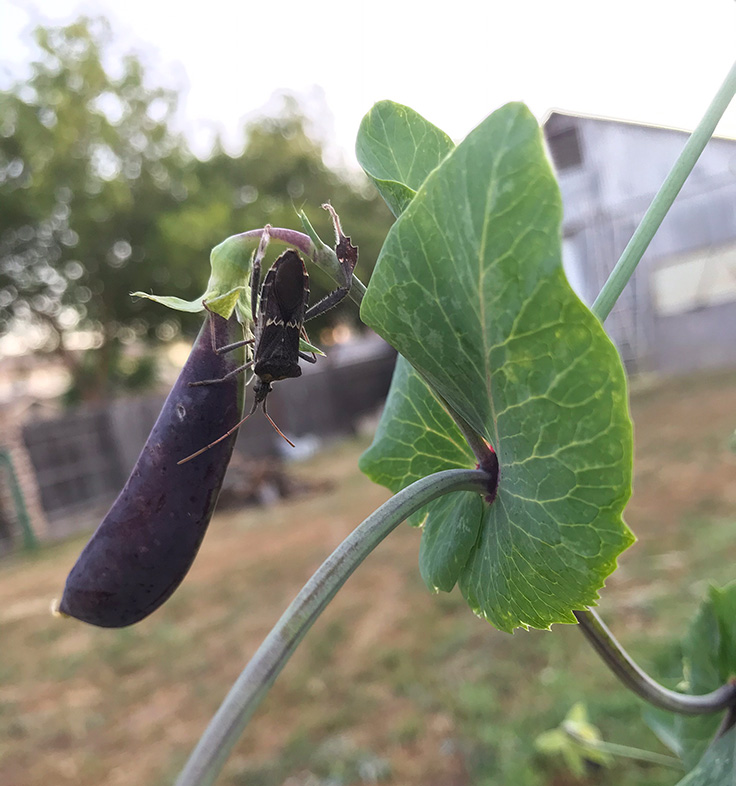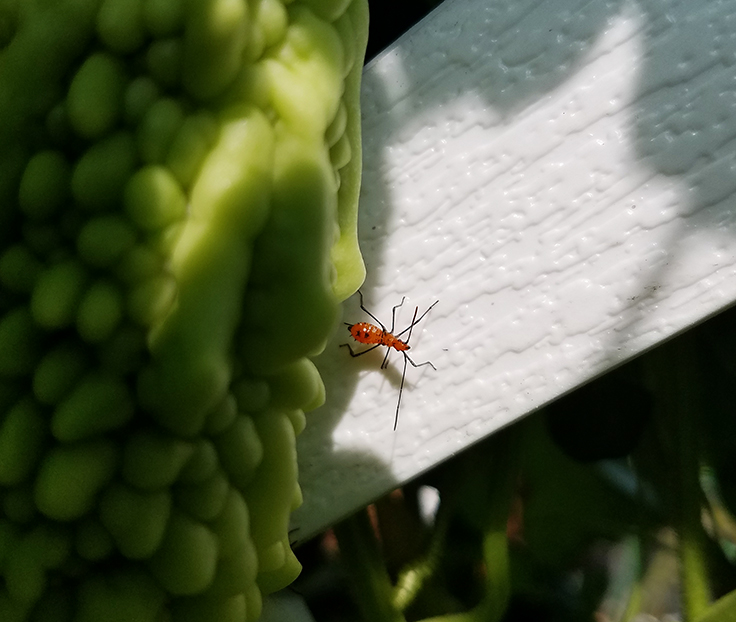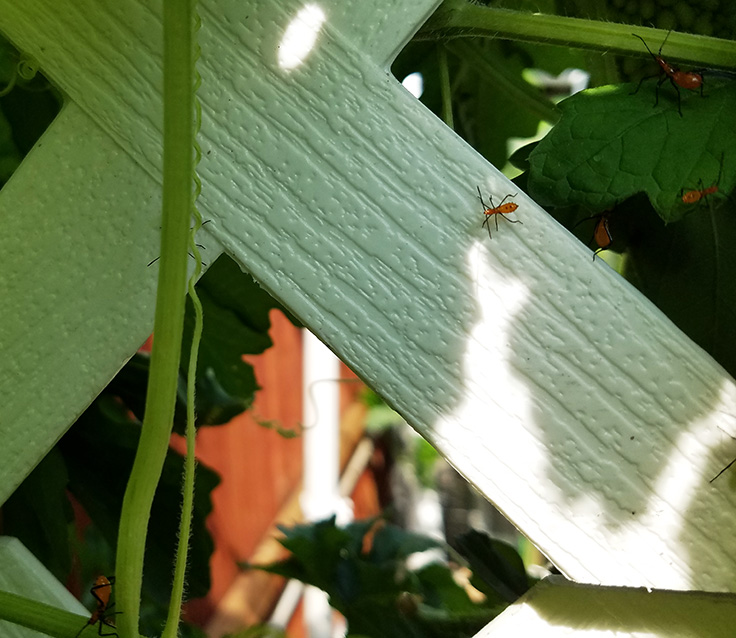Leaf-footed Bugs
Family name: Coreidae
Latin names: Leptoglossus zonatus, L. clypealis, L. occidentalis
Size: ¾” to 1” long
Description: Adult leaf-footed bugs are brown with a white zigzag pattern across their backs and they have a leaf-like growth on their hind legs. (click on the photo to view a larger image) Eggs are brown and rectangularly shaped. The nymphs have reddish-orange bodies with black spots on their backs and black legs. Leaf-footed bugs are related to stink bugs and often confused with assassin bugs which are beneficial insects. They are most commonly seen on tomato and watermelon plants. Leaf-footed bugs have piercing-sucking mouthparts and can cause damage to vegetables, fruits, nuts, and ornamental plants. The adults can fly.
Life cycle: Adult leaf-footed bugs overwinter in wood piles or beneath the peeling bark of trees such as citrus and junipers. Once the weather starts warming up, they become active. After mating in the spring, the females can lay up to 200 or more eggs. The nymphs hatch and become adults in 5 to 8 weeks. Please look at the photos of nymphs below. There can be 2 to 3 generations of leaf-footed bugs in a year and higher populations of them after a mild winter.
Signs of their activity: They damage beans, cucurbits (cucumbers, melons, squash and pumpkins), nightshade family crops (eggplants, peppers, potatoes and tomatoes), but really target fruit crops. They use their piercing/sucking mouthparts to suck out the sap and fluids from all of these types of crops. Look for discolored fruits and sunken areas on pods.
Controls: Hand-pick them. Cover the crop with floating row cover at planting time to protect them; remove the cover once the plants begin blooming so the pollinators can get to them. Keep up with the weeds in your garden as the bugs can overwinter on them. Apply insecticidal soap, Neem, or pyrethrins to control the nymph stage.
Natural predators: Assassin bugs, parasitic wasps, tachinid flies, spiders, and birds.
Back to Organic Pest Control



